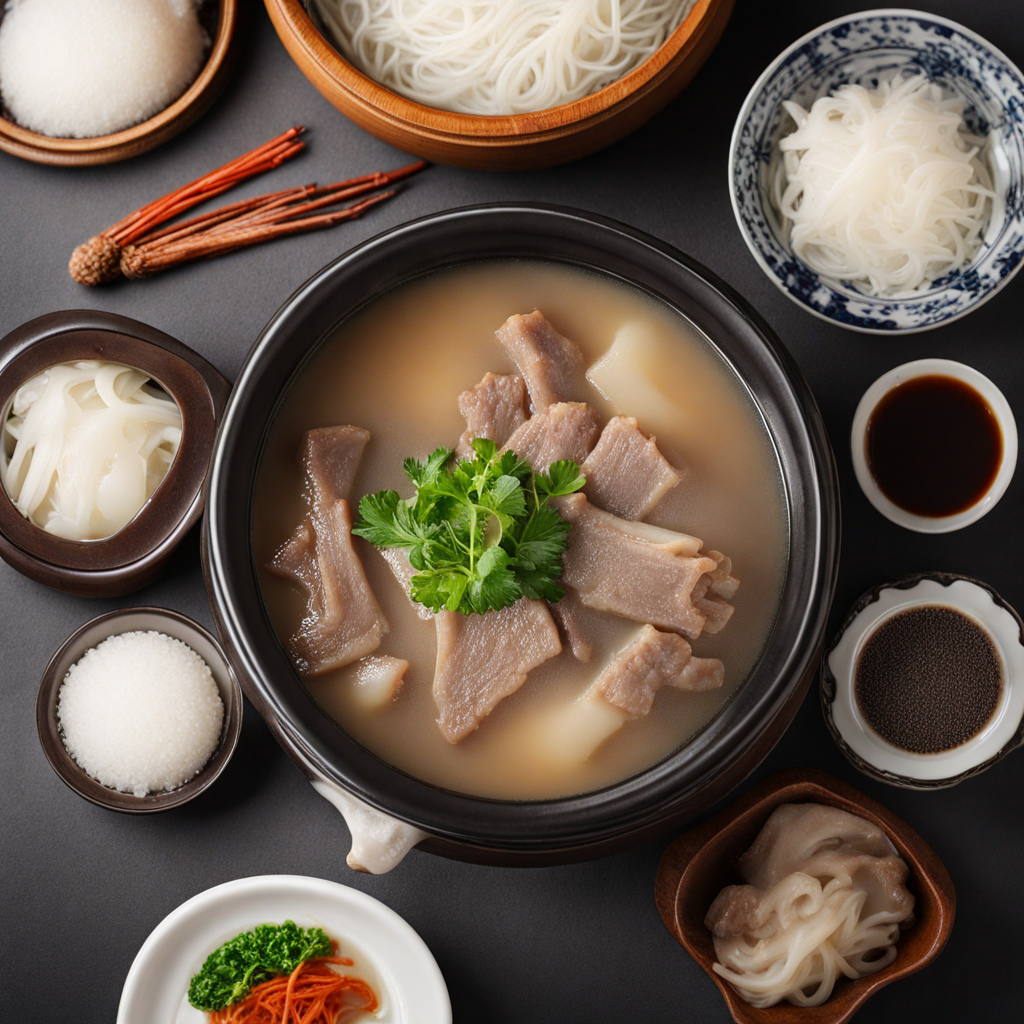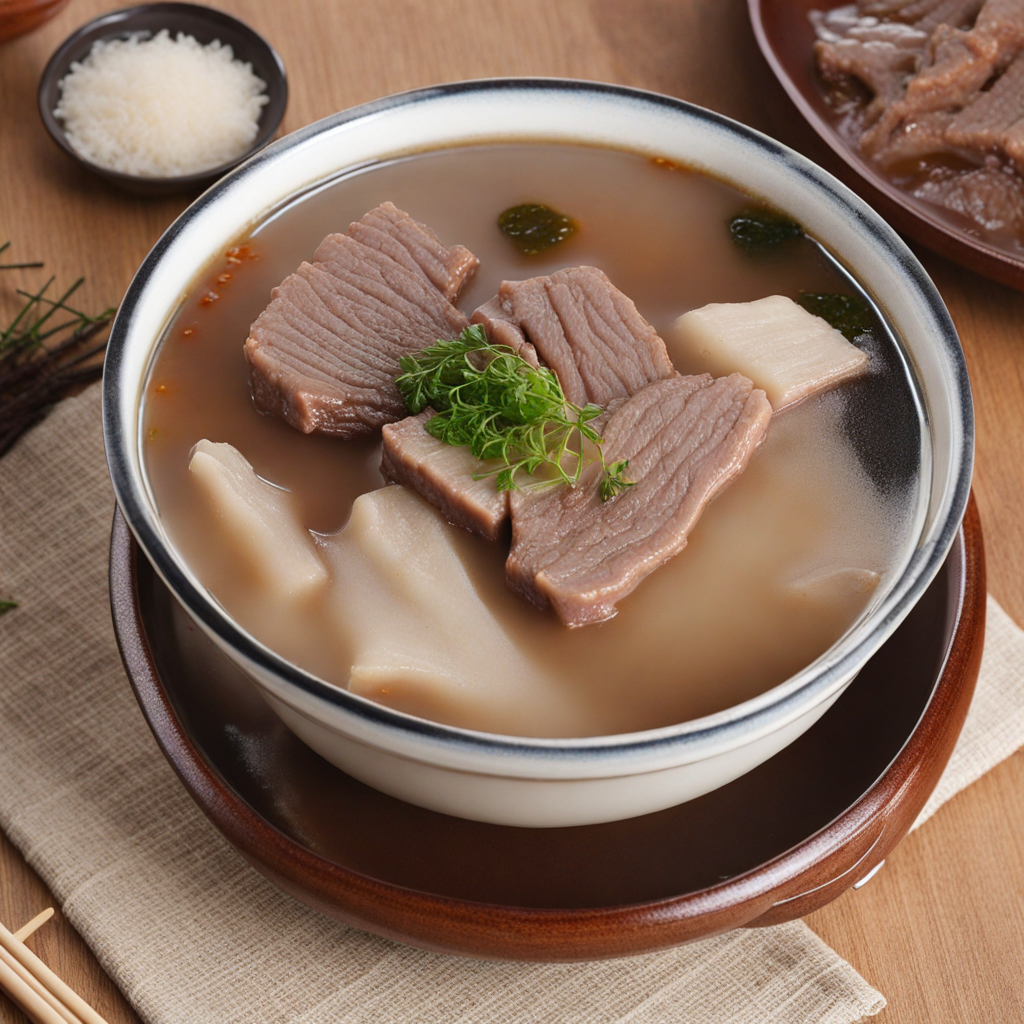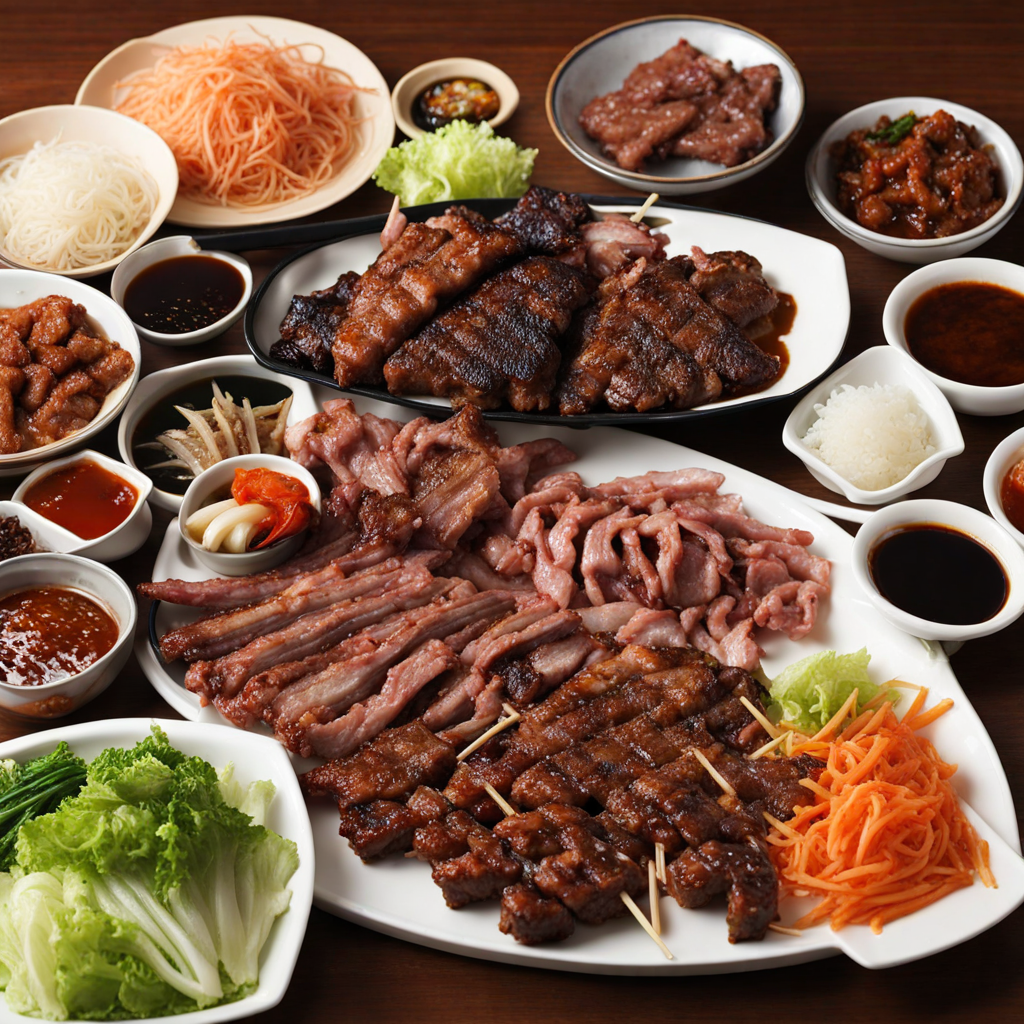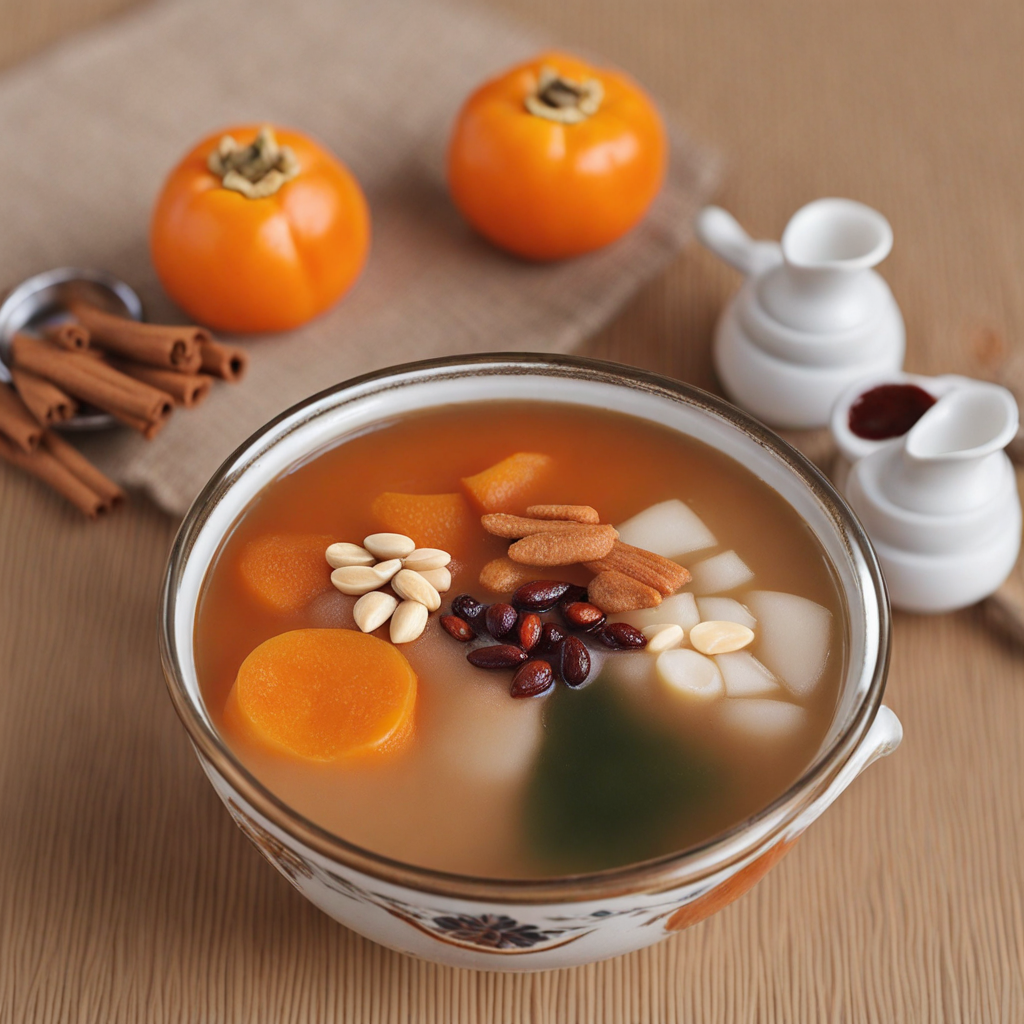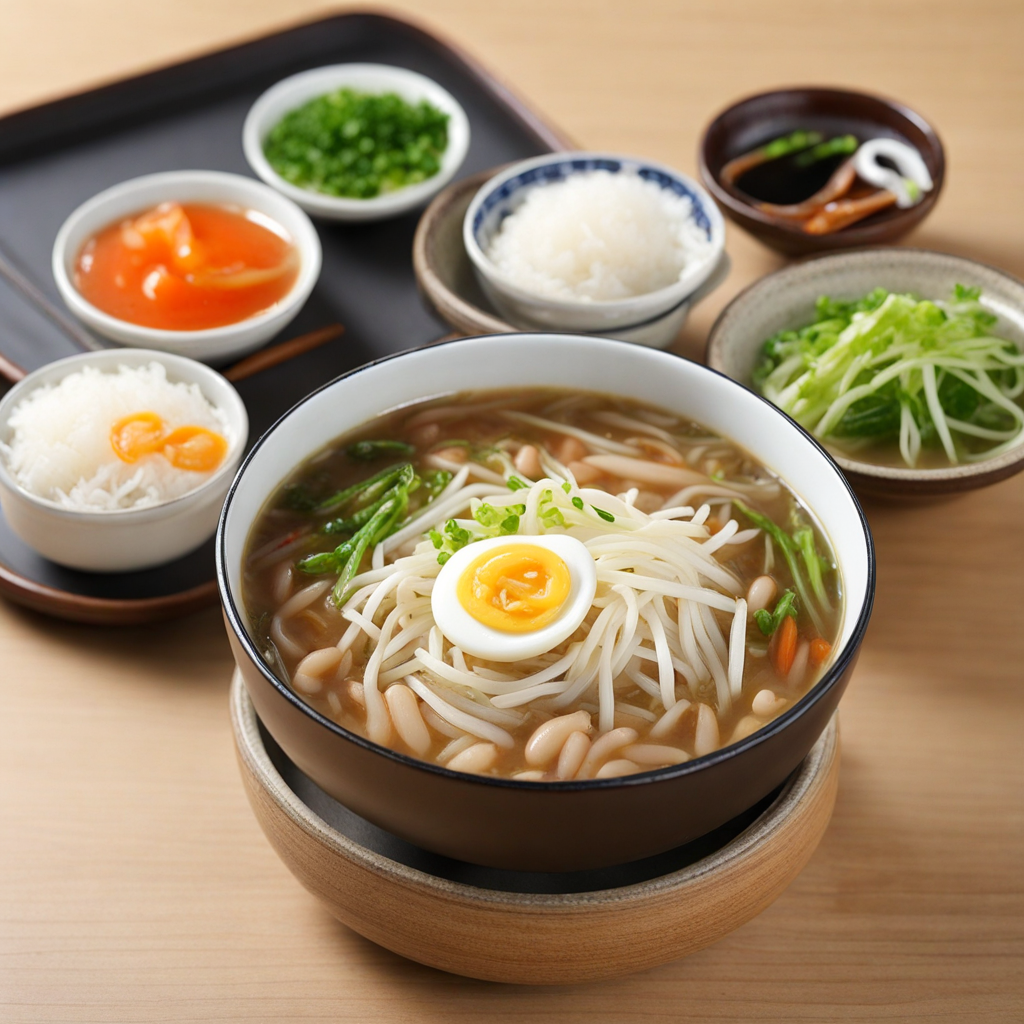Seolleongtang
Seolleongtang is a traditional Korean soup that offers a unique and comforting taste experience, perfect for food enthusiasts eager to explore new flavors. This milky-white broth is made by simmering beef bones, particularly the leg bones, for several hours, allowing the collagen and marrow to infuse the broth with a rich, hearty essence. The result is a deeply flavorful and nourishing soup that is both hearty and light, making it a popular choice for those looking to warm up on a chilly day or to invigorate the spirit. The soup is typically served with tender chunks of beef, often brisket or shank, which add a delightful texture that complements the silky broth. Seolleongtang is usually accompanied by a selection of condiments, such as salt, black pepper, and chopped green onions, allowing diners to customize the flavor to their liking. The simplicity of the ingredients allows the natural taste of the beef and bones to shine through, creating a dish that is both satisfying and restorative. While seolleongtang may be enjoyed on its own, it is often served with a side of rice and kimchi, further enhancing the overall dining experience. The combination of the savory broth, tender meat, and the crunch of kimchi creates a harmonious balance of flavors and textures. For those seeking to explore the depths of Korean cuisine, seolleongtang is a must-try dish that is not only comforting but also steeped in tradition and culture.
How It Became This Dish
설렁탕 (Seolleongtang) is a traditional Korean soup that embodies the rich culinary heritage of South Korea. Its origins can be traced back to the late Joseon Dynasty (1392–1910), where it is believed to have been inspired by the culinary practices of the nomadic tribes of the northern regions. As a dish primarily made from beef bones, it reflects the resourcefulness of Korean cooks who sought to create nourishing meals from available ingredients. The soup is made by simmering beef bones, brisket, and sometimes other cuts of meat for an extended period, typically several hours, which results in a milky-white broth that is both rich and hearty. Historical Context The development of Seolleongtang is closely linked to the socio-economic dynamics of Korea during the Joseon period. At that time, beef was a luxury food item, accessible mainly to the upper classes. However, the common people utilized every part of the animal, and the practice of boiling bones to extract flavor and nutrition became widespread. The long cooking process was believed to enhance the health benefits of the soup, making it a staple for those in need of sustenance and recovery. Seolleongtang's name itself carries historical significance. The term "Seolleong" is thought to derive from "sullungtang," which means "boiled soup." This reflects the cooking method that emphasizes the slow and careful preparation of the ingredients, allowing the flavors to meld together beautifully. \n\n Cultural Significance In Korean culture, Seolleongtang is more than just a dish; it is a symbol of comfort and community. The soup is often enjoyed during family gatherings and celebrations, serving as a reminder of home-cooked meals and familial bonds. It is also regarded as a restorative food, often consumed by those recovering from illness or fatigue. The simple yet nourishing nature of Seolleongtang encapsulates the Korean philosophy of food as medicine, where meals are crafted not only for pleasure but also for health. During the Korean War (1950-1953), Seolleongtang gained further prominence as it became a vital source of nutrition for soldiers and civilians alike. The dish was adapted to meet the needs of those living in harsh conditions, and its popularity surged as it became readily available in food stalls and makeshift restaurants. This period solidified Seolleongtang as a staple in the Korean diet and elevated its status as a beloved comfort food. \n\n Modern Development As South Korea transitioned into a modern economy in the latter half of the 20th century, Seolleongtang underwent a transformation that mirrored changes in society. The dish began to appear in more upscale restaurants, where chefs experimented with presentation and flavor profiles while still honoring traditional methods. Variations of Seolleongtang emerged, incorporating different cuts of meat and additional ingredients such as noodles or rice, appealing to a broader audience. In contemporary times, Seolleongtang is often served with a side of rice and accompanied by kimchi and various banchan (side dishes). Its versatility allows it to be enjoyed in various settings, from casual street food stalls to elegant dining establishments. This adaptability has contributed to its enduring popularity among both locals and tourists. \n\n Regional Variations Throughout South Korea, various regions have developed their own interpretations of Seolleongtang. For example, in Seoul, the dish is typically made with a focus on a clear, milky broth, while in Busan, seafood may be added, creating a unique flavor profile that reflects the coastal environment. These regional adaptations highlight the diversity of Korean cuisine and the ways in which local ingredients influence traditional dishes. In addition to regional variations, the increasing globalization of food culture has introduced Seolleongtang to international audiences. Korean restaurants around the world now feature this dish, often attracting patrons curious about authentic Korean flavors. The rise of Korean pop culture, including music and television, has further fueled interest in traditional foods like Seolleongtang, making it a culinary ambassador for South Korea. \n\n Health Benefits In recent years, Seolleongtang has been lauded for its health benefits, particularly due to its rich nutrient profile. The slow-cooked broth is known to be high in collagen, which is beneficial for skin health, joint support, and overall well-being. Additionally, the dish is often low in calories and fat, making it a suitable option for those seeking a wholesome meal. The inclusion of garlic and green onions not only enhances the flavor but also adds to the dish's health-promoting properties. The nutritional aspects of Seolleongtang resonate with the contemporary focus on health-conscious eating, allowing it to maintain relevance in modern diets. As more individuals seek out foods that offer both comfort and nourishment, Seolleongtang stands out as a perfect example of how traditional recipes can adapt to meet contemporary demands. \n\n Conclusion Seolleongtang represents a rich tapestry of history, culture, and culinary evolution in South Korea. From its humble beginnings as a nourishing meal for the common people to its status as a beloved comfort food enjoyed by all, this traditional soup continues to hold a special place in the hearts of Koreans and food enthusiasts worldwide. As it evolves, Seolleongtang remains a testament to the enduring significance of food in nurturing personal and cultural connections. Its story is an ongoing journey, one that reflects the resilience and creativity of the Korean people as they celebrate their culinary heritage.
You may like
Discover local flavors from South Korea


